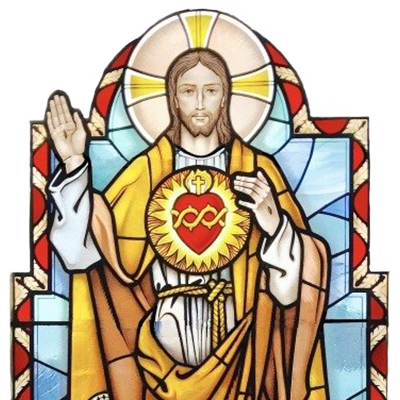Parish News
You can download our weekly Newsletter
from this section too
Welcome to the 'Parish News' section for Sacred Heart, Cobham

On Christmas Eve (Wednesday) there will be a special short service for our younger parishioners (0 > 8 years) in which we will sing three children’s carols as we talk about and prepare the Crib for our Christmas Season. This is not a Mass but is perhaps a chance to ‘calm things down’ before tea time.

St Stephen was a man filled with grace and power, working great wonders among the people. Certain Jews persuaded others to make the charge of blasphemy against him. He was seized and placed in front of the Sanhedrin. In his speech, Stephen recalled God’s guidance over Israel’s history, as well as Israel’s idolatry and disobedience. His words brought anger from the crowd. “But filled with the holy Spirit, looked up to heaven and saw the glory of God and Jesus standing at the right hand of God, saying, ‘Behold, I see the heavens opened and the Son of Man standing at the right hand of God.’ As they were stoning Stephen, he called out, ‘Lord Jesus, receive my spirit.’ …‘Lord, do not hold this sin against them.’”
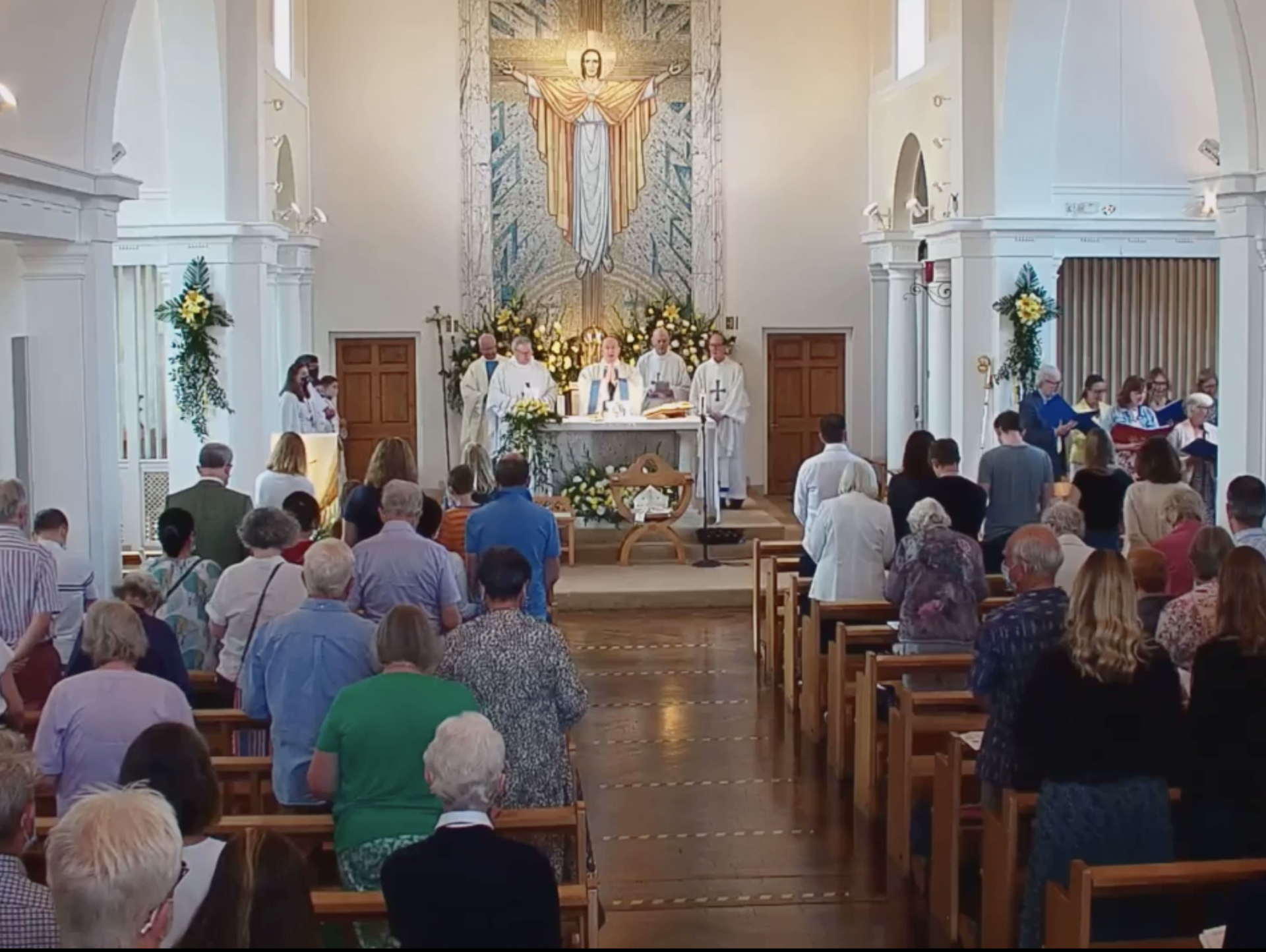
The musings of one of God’s smallest creatures on events in and around the Parish over the past seven days . . . . Busy times around The Presbytery as things get into full swing ready for the coming feasts and celebrations . . . . . On Sunday afternoon the third of our celebrations of Advent Evening Prayer and Benediction took place; a chance for participants to step out from the secular rush of preparations in order to spend some quiet time with the Lord in prayer. Monday evening and Fr D was at St Peter’s School, Leatherhead meeting with the ‘shadow’ Parish Leadership Team for the new, ‘bigger’ Parish. At this the team were able to look at some of the responses from the recent consultation. They were also able to begin finalising the running order of the meetings that will be taking place in each community between mid-January and mid-February. Following on from Morning Prayer, Mass, and Exposition on Tuesday morning Fr D was able to complete the preparations for the Advent Adult Reconciliation Service planned for Friday evening along with the community from Effingham and Fetcham. In the evening our singers and musicians were practicing for the Parish Advent Carol Service on Sunday (21 st ), whilst Fr D was off over to Epsom to help them with their Adult Advent Reconciliation Service. On Wednesday, after Morning Prayer and Mass, Fr D moved items of furniture (long stools, votive stands, Dona machines, side tables etc.) from the church floor ready for the arrival of the workman who was to apply a new protective coat to the church floor. This meant that the church was locked in order to allow the floor to dry out afterwards. Once the workman had finished Fr D completed most of the common parts of the newsletter for this week and next (trying to steal a march as time is likely to be sparse!). Thursday morning, after Morning Prayer and Mass, Fr D did not go down to the diocesan offices in Crawley as he would normally as his secretary had said that there were several off with flu at present and he did not want to run the risk of catching it before/over Christmas. This meant that he could continue the work he was doing on the newsletters and start work on the Prayers of Intercession as well. After Morning Prayer and Mass on Friday Fr D was able to get the church ready for the Reconciliation Service in the Evening . . . . . . .

24th January, 11.00-16.00 at St Michael’s Church, Worthing, BN13 3AL. Led by Bishop Richard and Catherine Christmas (diocesan Liturgy & Music Adviser) this day will include talks on the Scriptures, the Lectionary and its use in the Liturgy, the Liturgy of the Word, and preparing to minister as a reader. Register your free place: https://abdiocese.churchsuite.com/events/
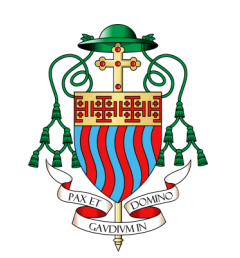
This was formed last Sunday (7th December) at an Inauguration Mass celebrated by Bishop Richard at Christ the Prince of Peace. The Mass, which was attended by people and clergy from across the community of communities,’ ten churches and Mass centres, marked an important milestone in the development of mission in the Diocese, with Weybridge the third new parish to be formed this year. Speaking during the Mass, Bishop Richard remarked: “There have been many conversations and a lot of wonderful meetings to bring us to today’s celebration. Let us pray for one another, and continue to pray together, delving more deeply into the wonder of the Faith and working ever more closely in this great mission that the Lord has given to us, journeying with one another towards the Kingdom of Heaven.” Weybridge is the second deanery in Surrey to become a parish in the care of a group of priests working together ‘in solidum,’ with the priests as a whole - and each priest individually - responsible for the pastoral care of the new Parish.

The “O Antiphons” are prayed for 7 days in preparation for Christmas: December 17–23. For those familiar with the Liturgy of the Hours, these are the antiphons used with the Magnificat each day. They are based on Isaiah’s prophecies and reveal the different titles given to the Messiah. O Sapientia (O Wisdom) Isaiah 11:2–3; 28:29 O Adonai (O Lord) Isaiah 11:4–5; 33:22 O Radix Jesse (O Root of Jesse) Isaiah 1:1; 11:10 O Clavis David (O Key of David) Isaiah 9:6; 22:22 O Oriens (O Rising Sun) Isaiah 9:1 O Rex Gentium (O King of the Nations) Isaiah 9:5; 2:4 O Emmanuel (God with us) Isaiah 7:14 Since each antiphon is short, it is helpful to spend time reading it each day, pondering it and praying it meditatively throughout the day as a way to make an immediate spiritual preparation for Christmas.

The musings of one of God’s smallest creatures on events in and around the Parish over the past seven days . . . . Things are beginning to get busier around the Parish as we get ever deeper into the Advent Season . . . . . Last weekend the Parish community joined together for our annual Christmas Bazaar. On Friday afternoon the ‘site set-up’ team moved into the hall after the morning hirers had vacated and sorted all the heavy lifting, placing of red tablecloths, and distribution of the items kindly donated by many parishioners to the stalls. Once the site team were finished the stall-holders moved in to arrange the goods for their individual stalls such that by 17.00 all was ready for Saturday morning. Stall-holders gathered from about 09.00 to make last minute adjustments to their tables before, after a short prayer, the doors were opened at 10.00 to the crowd that had gathered outside the Parish Centre. Throughout the morning there was a steady stream of visitors but not uncomfortable so. The ‘buzz’ in the hall was very pleasant and Fr D was pleased with the way in which parishioners were all working together to make the event a success. The various draws were begun at 12.40 and ended with the Grand Draw at 13.00. The financial gnomes ’did their thing’ afterwards and inside the newsletter you can see the results of everyone’s efforts before and on the day. Sunday afternoon there was the usual devotion of Advent Evening Prayer and Benediction in the church. Needless to say that Fr D was more than ready for a rest in the late afternoon! After Morning Prayer, Mass and Exposition on Monday Fr D picked up Canon Tony Churchill before setting off to St Anne’s, Banstead, where this month’s Deanery Meeting was taking place. A lot of the discussion was connected to the progress of the Diocesan Pastoral Plan in our area. Whilst the Deanery Meeting was taking place in Banstead the final pieces of insulation (under the flat roof) on the Presbytery were completed and the TV ariel cables re-instated. Having celebrated Morning Prayer and Mass Fr D started work on the newsletter before going off for his monthly lunch with Fr Ruslan (Walton-on-Thames). Fr Ruslan was able to recount details of the celebration of the opening of the new Weybridge Parish! In the evening our singers and musicians continued their practice for our Advent Carol Service (21 st December 18.00). Fr D did not go down to the Diocesan offices on Thursday as he received a message from his secretary that she was off with flu . . . . . .
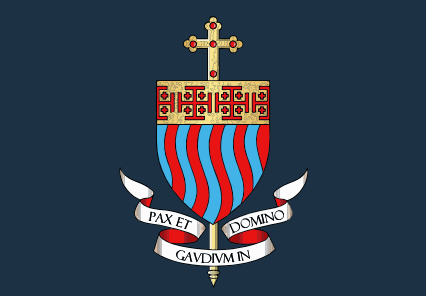
The Word Who is Life: The Call to Mission Continuing to Develop Our Response . . . . . . Background As many of you already know, over several years, Bishop Richard has met with clergy and parishioners to reflect on the opportunities and challenges our Church is facing and how best to respond to them. He then published The Word Who Is Life — our Diocesan Pastoral Plan — which was then presented to everyone in the Diocese (there are synopsis’ still available in the church narthex). Locally, as part of this Plan, the nine parishes that today make up the present Epsom Deanery will come together to form a New Single Parish at some point in 2026. The central message of the Pastoral Plan is “ The Call to Mission ” — inviting all of us to help to shape our parishes into strong, lively, and welcoming communities. What’s happening now So what is happening now? Here in Epsom Deanery, a team formed from clergy and parishioners from EVERY parish has been discussing how we should respond to this The Call to Mission . One of the first things the team asked itself was how to get everyone involved. To that end, a meeting is planned in the New Year in each of our existing parishes to share information of what the Pastoral Plan means, how any necessary changes will be decided, and to get the participation of all communities in shaping what our response will be. For our Sacred Heart community this meeting will take place at 19.30 on Wednesday 21st January - Please put the date in your diary today! What we are now asking of you The Pastoral Plan is a call to all parishioners, and we know that our communities are blessed with many different gifts. That is why your participation is needed even before this meeting take place. On your way out of church today, you are asked to take a “ You’re Invited! ” POSTCARD and a FLYER which outline how we are shaping our response to this call and what we can expect to be different over the coming months and years. For example, one of the goals is a wider expansion of parishioner leadership, participation, and engagement. Another goal is for our parishes to work more closely with one another and with our schools. Both postcards and flyers include QR codes or a link to a website where you can find more information to help you make your contribution: in particular, we are asking you to get involved by helping us to identify: Opportunities, Challenges, and any Questions . There are several ways for you to share your thoughts: You can fill in one of the “You’re invited!” postcards and return it before Sunday 14th December You can use the online form whose address you will find on the flyer Or, if you prefer, you can email directly to epsomdeanerynewsletter@gmail.com

CAFOD is once again encouraging people to “swap the socks for something special this Christmas,” giving a World Gift that will delight loved ones and help families and communities around the world to thrive. CAFOD’s World Gifts are ethical presents that make a real difference - from their Winter Warmth gift helping families stay safe through cold weather, to their Super Soup Kitchens supporting local partners providing meals for those in need, every gift brings hope where it’s needed most. Each World Gift comes with a card to give to your loved one, showing how their gift is changing lives. You can also add extra festive joy with the charity's stocking fillers, from chocolates to devotional items, and even some adorable cuddly toys! Find out more from CAFOD’s brochure available in the narthex
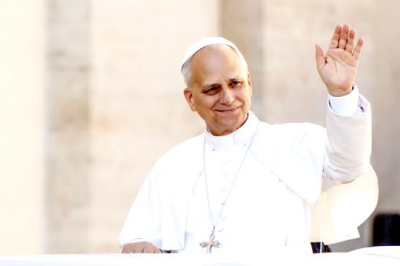
This week Pope Leo concluded his Apostolic Journey to Türkiye and Lebanon on Tuesday. Bringing the 6-day apostolic visit to a close, he said: “We hope to involve the entire Middle East in [a] spirit of fraternity and commitment to peace, including those who currently consider themselves enemies.” Reflecting on the three days he spent in Lebanon, Pope Leo referenced the country’s rich spiritual heritage and the resilience of its people, noting the deep veneration for the Blessed Virgin Mary shared by both Christians and Muslims. Addressing the ongoing challenges facing the country, he expressed solidarity with victims of the Beirut port explosion in 2020: “I carry with me the pain" he said, “and the thirst for truth and justice, of so many families, [and] an entire country.” Calling for an end to hostilities, he added: “We must recognise that armed struggle brings no benefit. While weapons are lethal, negotiation, mediation and dialogue are constructive. Let us all choose peace as a way, not just as a goal!” The Pope invoked the words of St John Paul II: “Lebanon is more than a country; it is a message! Let us learn to work together and hope together, so that this may become a reality.”
